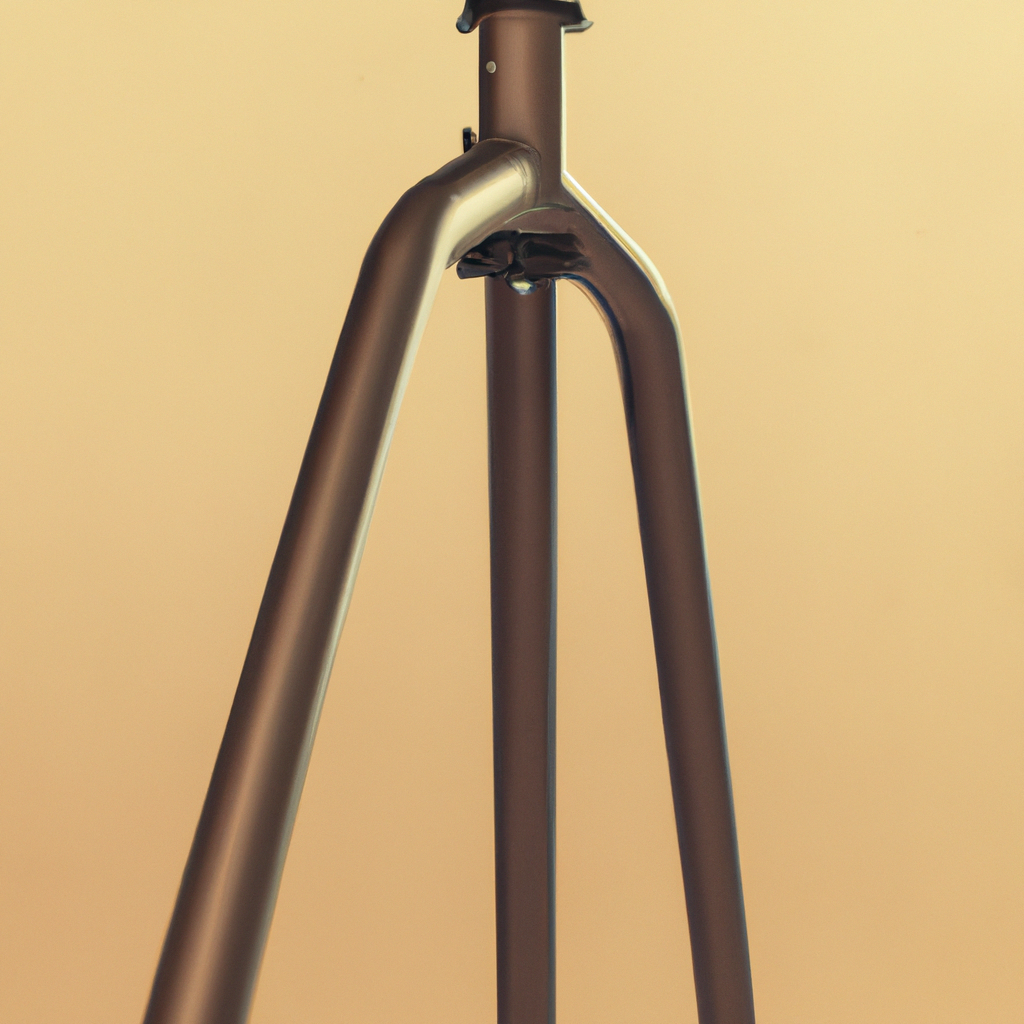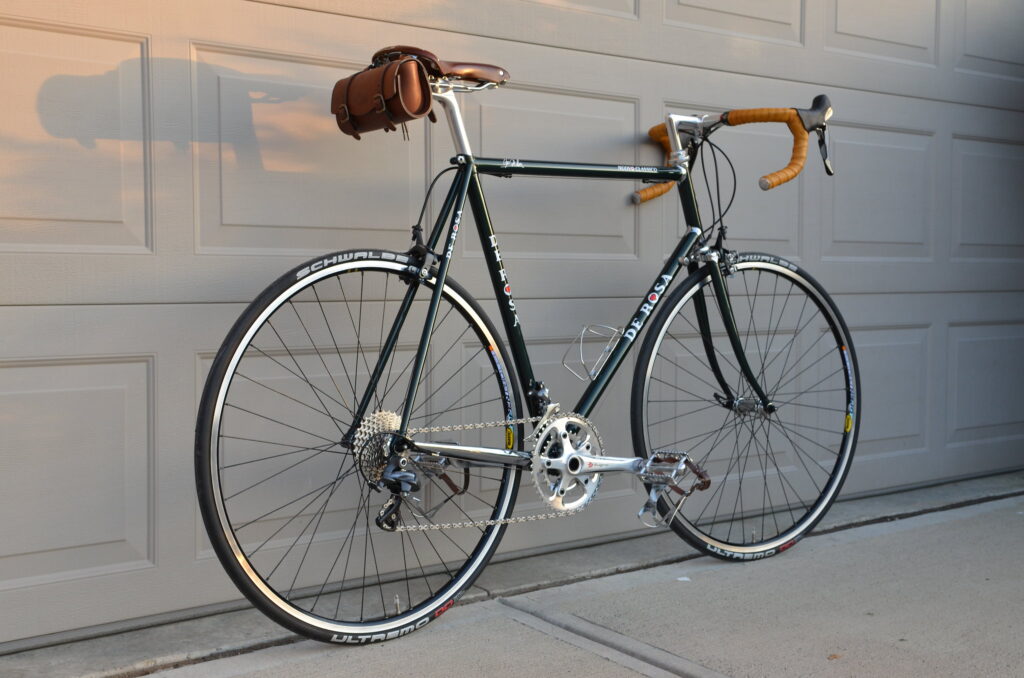If you’re in the market for a new bike, you may have come across the term ‘butted frame’ in your research. But what exactly does that mean, and why should you care? In this post, we’ll take a closer look at butted bike frames and explore the benefits they offer over other types of frames. Whether you’re a serious cyclist or just looking for a reliable ride, understanding the technology behind butted frames can help you make an informed decision when choosing your next bike.”
Understanding butted frames
A butted bike frame is a type of frame that is designed with tubing that has varying thicknesses along its length. The tubes are thicker at the ends where they are welded or brazed to the frame’s joints, and thinner in the middle where weight savings are desired. This results in a frame that is both strong and lightweight.
The process of butting involves heating the tube and then drawing it through a die to reduce its diameter in the middle section. This creates a tube that has a thicker wall at the ends and a thinner wall in the middle. The butted tubes are then cut to length and welded or brazed together to form the frame.
Butted frames are often used in high-end road bikes, mountain bikes, and other performance-oriented bicycles. They offer a number of advantages over frames made from straight-gauge tubing, including reduced weight, improved ride quality, and increased strength in critical areas.

Advantages of butted frames
Butted frames have many advantages for every builder to be aware of. They are special because they have two or more tubes that fit together and are welded.
Benefits of Butted Frames:
- Stronger and lighter due to better stiffness-to-weight ratio
- Cost-effective due to less material use
- Less shock vibrational response because of lighter weight
- Looks modern compared to seamless steel tubes
- Enhanced responsiveness and faster acceleration
- Dampens road vibrations and gives a comfy ride
In short, knowing the benefits of butted frames is important to pick the right bicycle frame and get the best performance. These advantages make butted frames stand out from other types.
Things to remember: Keep tubing thickness same per section, follow welding guidelines properly, select high-quality tubes from reliable manufacturers, etc. Low-quality products can erase all the advantages of butted frame design.
Whether you’re after a lighter bike or just a smoother ride, being aware of the details of butted bike frames will have you feeling all kinds of butted up.
Types of butted bike frames
To understand the various types of butted bike frames, the article delves into the differences between single-butted, double-butted, and triple-butted frames. By analyzing these sub-sections, you will gain an in-depth understanding of what sets each frame type apart and which bike frame may be the best fit for your cycling needs.
Single-butted frames
Double-butted bike frames have thicker ends than the other, making them lightweight and comfy. Popular models have Reynolds 753 steel (671g), Aluminum A6 (295g), and Carbon CB2 (583g) – used in road racing, cyclocross, track racing, and long-distance cycling.
Manufacturers offer customizations like frame length adjustments. To keep it in good shape, clean it regularly and avoid over-tightening bolts. Transporting with a bike rack is best, to keep it from being on its side.
Double-butted frames
The following table shows the specifications of Double-Butted Frames:
| Dimension/Specs | Measurement |
|---|---|
| Tube Length | Varying |
| Weight | Light |
| Thickness | Varying |
| Diameter | Varying |
Double-butted frames are light, yet strong. They have tubes with varying thicknesses, thicker near the joints and thinner elsewhere. This reduces weight, but not strength or stability.
Invest in a bike with a double-butted frame to get speed and reliability. Enjoy the benefits of this type of frame! And remember: triple butted frames – ’cause who needs a butt when you have three?
Triple-butted frames
Triple-Butted Frames have some great features! They weigh less than Double-Butted Frames, are more durable and agile than Single-Butted Frames, and are made from high-quality alloy or carbon fiber. However, they do come at a higher cost due to their advanced manufacturing process.
One of these frames’ special characteristics is that it offers a great amount of rigidity, ideal for riders who need an extra performance boost. Plus, it helps reduce vibrations and provides responsive steering control on tough trails.
According to Bike Magazine, research has revealed that triple-butting allows manufacturers to be more creative during production, while providing cyclists with a better, smoother ride. Knowing the right material for your butted bike frame is key – it could be a difference between a comfortable journey and a painful one!
Materials used in making butted frames

To understand the materials used in making butted frames for bikes, you need to explore three key sub-sections: Steel butted frames, Aluminum butted frames, and Carbon fiber butted frames. Each type of material offers unique features and benefits that impact the overall performance and durability of the bike.
Steel butted frames
Steel butted frames have special qualities that make them so unique. Five important points to note:
- Two tubes are joined together to form a stronger and lighter structure.
- The wall thickness of the tubes is thinner at their ends.
- The process of joining two tubes is known as “brazing” or “soldering.”
- The tube ends can be tapered and inserted into the other tube.
- Chromoly steel, with its high strength-to-weight ratio, is often used.
Keep in mind, steel butted frames come at a higher price. But the advantages are worth it – increased durability and better handling.
And, did you know that these frames are still popular today? Even with all the modern materials, there’s something special about classic steel bikes.
My own experience with steel butted frames? I bought an old racing bike from a thrift store. It was from the 1970s, yet surprisingly light and nimble. Riding it felt like flying – an unforgettable experience! Aluminum may be light, but nothing beats the lightness of steel.
Aluminum butted frames
Aluminum butted frames are a great choice for bike frames! They boast a lot of features, like being light and strong, plus they’re resistant to corrosion and look slick. Plus, they’re customizable – you can design them to your own needs.
Here are the five features:
- Lightweight: Aluminum makes the frames light, but still strong.
- Stiffness: High stiffness helps power transfer to the wheels.
- Corrosion Resistance: Aluminum resists corrosion, making them durable in all weather conditions.
- Aesthetically Pleasing: The sleek design looks elegant and modern.
- Customizable: Flexible aluminum lets you customize the frame.
Pro Tip: When buying an aluminum butted frame, think about how you’ll use it – different alloys and tube sizes can affect stiffness and comfort. Carbon fiber butted frames are also a great choice – nothing says ‘I’m faster than you’ like lightweight materials and a bit of testosterone!
Carbon fiber butted frames
Carbon fiber frames with butted tubing are made using high-performance composite materials. The tube’s thickness is tapered towards the ends, which helps to reduce weight yet still provide strength at vital points.
Tables show the specs of carbon fiber butted frames:
| Specification | Description |
|---|---|
| Material | Carbon Fiber Reinforced Polymer |
| Weight | 800-1200 grams |
| Durability | High strength-to-weight ratio |
| Manufacturing process | Molding and curing under elevated temperatures and pressure |
Besides weight-loss and increased strength, carbon fiber butted frames also provide improved ride quality due to their dampening properties.
It is worth noting that the carbon fibers used in these frames are amazingly stiff and strong, making them a favorite for high-performance bikes. (Source: Cycling Weekly)
Wow, the construction of frames has been taken to the next level! Butted frames are no longer just welded shut, as new techniques have been devised for their formation.
Butted frame construction techniques
To understand the different techniques used in butted frame construction, dive into fillet brazing, TIG welding, and lugged construction. Each technique offers varied solutions to create a strong and lightweight frame.
Fillet brazing
Fillet brazing is the way to go for making butted frames! It’s a welding technique that uses melted filler metal between two tubes to join them. Here’s a 4-step guide to get it done:
- Clean the tubes and joints with a wire brush and acetone.
- Add flux to the joints and heat with a torch until the filler metal melts.
- Pour the filler metal around the joint and use the flame as a guide.
- Let it cool and then get rid of any excess material.
A major benefit of fillet brazing is it looks nicer than other welding methods. However, it takes more time and more skill. Fillet brazing lets you build bicycle frames with special features that other construction techniques don’t offer. So, why not try it out? Improve your skills and create unique frames that’ll wow anyone!
TIG welding
Tungsten Inert Gas (TIG) welding is a process of fusing metal parts together with an electric arc and shielding gas. It’s popular in the manufacturing industry due to its precision and high quality welds.
A Table outlines key aspects of the TIG welding process. It includes arc initiation, filler metals and gases used.
| Arc Initiation | Filler Metals | Shielding Gases |
|---|---|---|
| High-frequency start | Aluminium | Argon & Helium |
| Lift-start | Steel | Argon |
| Scratch-start | Copper alloys | Krypton & Xenon |
When TIG welding safety is concerned, it’s important to wear protective gear like gloves, eye protection, and the correct lens helmet. Also avoid working near flammable materials, as TIG produces intense heat that could cause ignition.
Studies prove that TIG welds are higher quality than those from other processes, such as MIG. This is because TIG produces less spatter, porosity defects and has a lower chance of cracking.
Lugged construction
Lugged Joining is the technique used to construct bicycle frames. It involves small pre-made fittings to connect the tubes.
The table below has components and their descriptions:
| Component | Description |
|---|---|
| Lug | Pre-made fitting that connects the tubes |
| Tube end | End of the tube that fits into the lug |
| Brazing material | Filler metal used to join the tubes and lugs together |
Lugged construction is unique as it allows for custom design. It’s easy to repair and gives a classic look.
A master frame builder still prefers lugged construction. It lets them create personal designs for clients. Spread some more butter on, why worry about frame maintenance?
Butter frame maintenance and repair
To maintain and repair a butted bike frame correctly, you need to take care of it and avoid common damages. You can achieve this by following two sub-sections: proper cleaning and care, and common damages and repairs. In this section, we will delve into these sub-sections to provide you with solutions for maintaining and repairing your butted bike frame.
Proper cleaning and care
To keep your butter frame in tip-top shape, here’s how you can look after it:
- Wipe the surface with a soft cloth to remove dirt.
- No harsh chemicals – they could damage the material.
- Protect the frame with a coating to resist scratches and discoloration.
- Keep it dry and away from moisture.
- Tighten any loose screws or fittings.
- When not in use, store it in a dust-free area.
Remember, good maintenance also helps keep your butter frame hygienic and stops bacteria growth.
Pro Tip: Check the manufacturer’s guidelines to get the best out of your butter frame!
Common damages and repairs
Maintaining and repairing your butter frame can be tricky. Here are some common damages you may face:
- Scratches – Sand it out or fill in.
- Loose Joints – Reinforce with strong adhesive.
- Cracks – Fix with wood filler or epoxy.
- Rust – Sand, repaint affected area.
- Broken Pieces – Replace with proper parts.
- Warping – Sanding or steam bending may help.
Remember, each butter frame is unique and must be inspected before repairs.
Historians have uncovered extravagant butter frames from medieval times. This shows how important butter was historically in trade.
Butter frames done!
Conclusion on butted bike frames
Butted bike frames offer a lightweight design that boosts performance. Their strength-to-weight ratio provides stability on rough terrains, while their varying thicknesses ensure support where needed and keep the frame light otherwise.
Butted frames are ideal for both road and mountain bikes. The process of creating them includes heating and connecting tubes, then forming them using hydraulic mechanisms. This ensures an even thickness along each tube, offering riders comfort regardless of terrain.
Not only do butted frames improve agility on rugged paths, but they also reduce fatigue on long rides. Though these models might be pricier than standard ones, riders get a high return on investment as they require fewer repairs over time.
Pro Tip: A well-maintained butted bicycle frame will last longer and provide more benefits than other traditional, less durable options.
Also Read What is a lugged bike frame?
Frequently Asked Questions
Q: What is a butted bike frame?
A: A butted bike frame is a type of bicycle frame where the thickness of the metal varies along its length, with thinner tubes at the center and thicker ones at the ends. This helps to reduce weight without sacrificing stiffness, strength, or durability.
Q: How is a butted bike frame made?
A: A butted bike frame is made by manipulating the metal tubes to vary in thickness. Some manufacturers use hydroforming or mechanical tube shaping to achieve the desired thickness. The tubes are then welded together to form the frame.
Q: What are the advantages of a butted bike frame?
A: The main advantage of a butted bike frame is that it is lighter than a frame with uniform thickness, without sacrificing strength or stiffness. This can make the bike faster and easier to handle. Butted frames can also be more durable, as the thicker ends are less prone to damage from stress.
Q: Are there different types of butted bike frames?
A: Yes, there are several types of butted bike frames, including single-butted, double-butted, and triple-butted. Single-butted frames have one end thicker than the other, double-butted frames have both ends thicker than the center, and triple-butted frames have three different thicknesses along the length of the tube.
Q: How do I know if my bike frame is butted?
A: You can usually tell if your bike frame is butted by looking at the thickness of the tubing. Butted frames will be thinner in the center and thicker at the ends, which can be seen by eye or with a caliper. However, some frames may not have obvious butting, so it’s best to consult with the manufacturer or a bicycle expert if you’re unsure.
Q: Are butted bike frames more expensive?
A: Butted bike frames can be more expensive than frames with uniform thickness, as they require more manipulation during the manufacturing process. However, the cost difference is usually minor and can be offset by the benefits of a lighter, stronger, and more durable frame.






